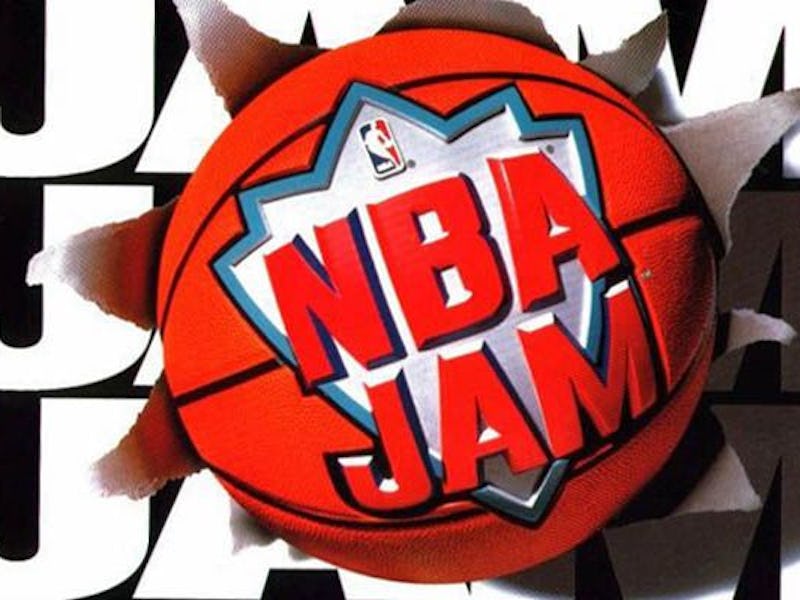NBA Jam Is A Timeless, Sports-Agnostic Classic
They don’t make ‘em like they used to…

In the summer of 2009, I vividly remember digging up my uncle’s Super Nintendo out of the large, locked chest that sat dormant in my grandparents' spare room for more than a decade. As a kid who started gaming on the original PlayStation a decade earlier, suddenly having access to the console many dubbed “the greatest of all time” was an exciting prospect.
Underneath the iconic black and red Super Nintendo box were four games: the obligatory SNES pack-in game Super Mario World, and boxed copies of Madden 94, Super Street Fighter II Turbo, and Midway’s 1994 classic — NBA Jam.
I’d always been told my uncle, who’d served in the military for most of my life, was a big-time gamer like I was. So I couldn’t help but be disappointed by the games he decided to leave behind in Brooklyn. Where was Chrono Trigger or Final Fantasy VI? Did he not keep his copies of Super Metroid or A Link To The Past? Hell, I’d even settle for Toy Story, a game seared into my brain from the countless times I’d seen ads for it on our family VHS copy of the movie.
NBA Jam is a stripped-down, arcade take on basketball that captures everything that makes the real thing so enthralling.
I checked out Madden, Street Fighter, and Mario, only half enamored by the novelty of playing games released when I could barely talk. But something magical happened when I popped in NBA Jam, the game I was least interested in: I couldn’t put the controller down. I quickly called my grandpa into the room to get in on the action. From that day on, heated battles between his New York Knicks and my Chicago Bulls became a regular part of our daily routine for the rest of that summer.
The revelation that I had about NBA Jam in 2009 is one that I believe any gamer from any point in time would have. It’s a zany, timeless cultural touchstone custom-built for near-infinite hours of fun, one that holds up even as we hit the 30th anniversary of the arcade classic’s console port. When older games say “they don’t make ‘em like they used to,” let it be known that they are talking about NBA Jam.
NBA Jam is a two-on-two arcade basketball game. It is fully licensed, including some of the biggest names (except for THE biggest name) from the sport’s golden age. But instead of recreating the on-the-court action, NBA Jam takes the most basic rules of basketball and distills it into an over-the-top frantic party game full of superhero-like leaps and bounds and clutch halfcourt buzzer beaters.
You don’t have to be a basketball fan to enjoy NBA Jam. I wasn’t when I picked it up for myself: Countless hours logged into EA Big’s excellent NBA Street games was as far as my fandom had gone during the PlayStation 2 days. And yet, NBA Jam’s cartoon aesthetic cut through my aversion to the sport.
EA Big would keep the spirit of NBA Jam alive in the 2000s with their NBA Street series.
NBA Jam is the rubric for how to effectively gamify sports. After all, the only thing that separates the essence of video games and most live sports is the input method. That fact is especially apparent when you play their virtual counterparts (as someone who dabbles in Madden every few years, non-sports fans would be surprised how much virtual pigskin has in common with your average turn-based strategy games).
By doing away with the obsession to accurately portray the television broadcast, NBA Jam helped me understand that you don’t need high-definition fidelity or complicated mechanics to convey what makes all sports such an enduring part of human history.
Luckily in 1993 and 1994, when NBA Jam and its slightly updated release NBA Jam: Tournament Edition dropped (think Street Fighter’s Super and Turbo versions), photorealism wasn’t a concern for developer Midway. They instead prioritized letting players recreate the big fun moments that kept NBA fans tuning in, sprucing it up with fire effects, big heads, and larger-than-life personalities that made gaming’s most popular mascots like Donkey Kong or Sonic such enduring icons. They were looking to make what might have been boring to the future evangelists for JRPG classics like Chrono Trigger, and demanded their attention with a genuine classic.
There was a brief NBA Jam revival in the 2010s, but the series hasn’t seen an update in over a decade.
The only negative thing I can say about NBA Jam is its lasting legacy. Despite its cultural penetration and influence on the many alternative sports games that followed (like EA’s aforementioned Street series), it hasn’t remained a mainstay of the medium. The fact that every major sports game publisher has decided against releasing a big-budget exaggerated arcade version of their annualized series is borderline criminal.
But for the lucky few who still have a way of revisiting an all-timer like NBA Jam, that’s not such a bad thing.
A year after I dug up that SNES cart of the original NBA Jam, EA Sports would announce a revival of the seminal sports game. It was shocking that no game company had thought to do that sooner. By 2010, basketball was as big as it was in the 90s, with stars like Carmelo Anthony, LeBron James, and Kobe Bryant becoming mainstream icons in their own right like Patrick Ewing and Scottie Pippen before them. But as cool as it was to see the franchise return in a big way, I decided to keep my $50 (it’s still insane that EA tried to pull that).
It was great that more people could discover this gem on then-modern consoles. But you can’t improve on perfection. And that’s exactly what NBA Jam is.